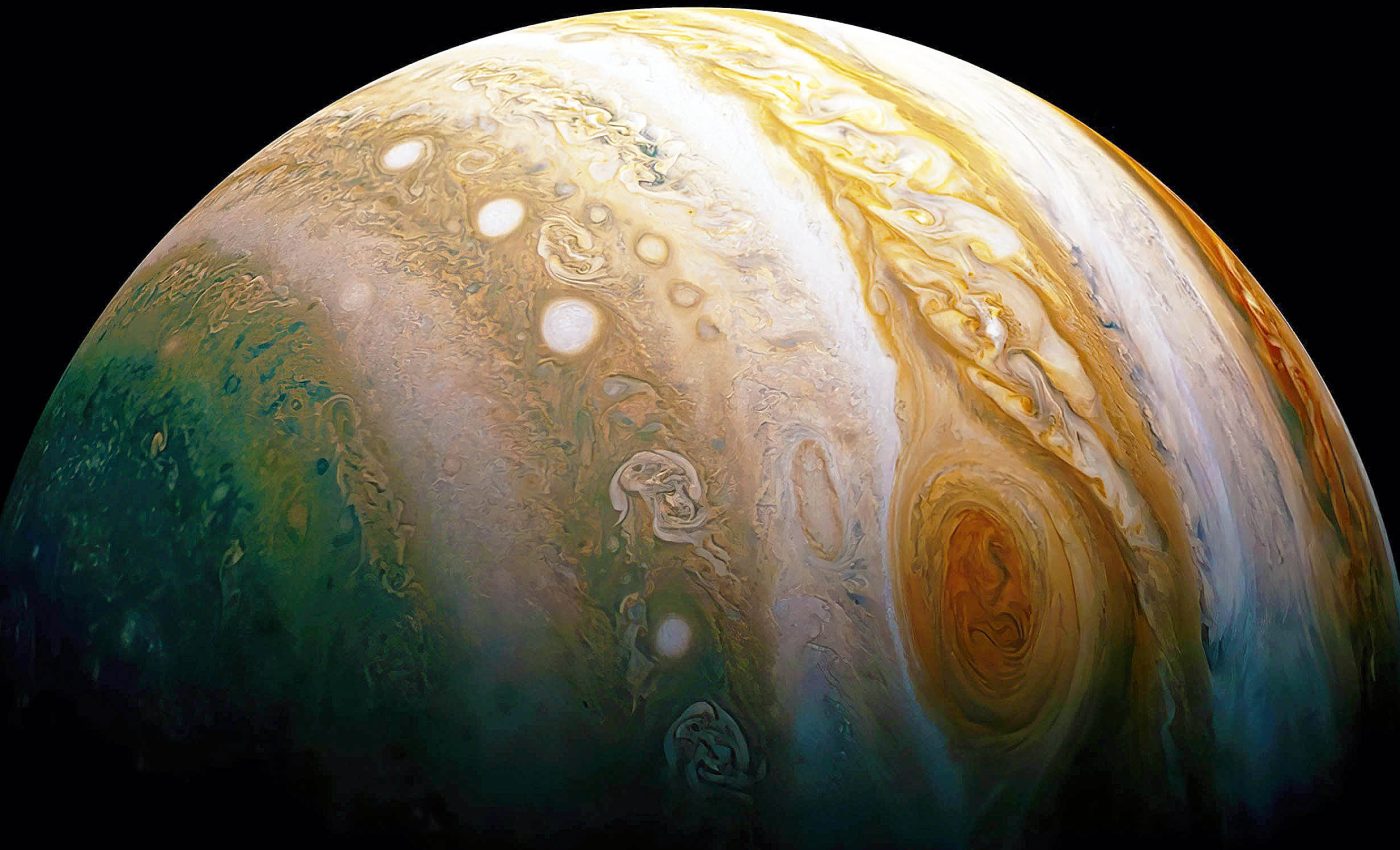
Jupiter's Great Red Spot grows and shrinks like a stress ball
Did you ever think a raging storm could mimic a stress ball? Well, on Jupiter it can. NASA’s Hubble Space Telescope has captured intriguing images of Jupiter’s iconic storm, the Great Red Spot (GRS), which is big enough to engulf our entire planet.
The Hubble images reveal that the Great Red Spot is not as stable as it may seem. The elliptical storm is constantly shifting and changing its dimensions, behaving much like a stress ball.
Mystery of Jupiter’s Great Red Spot
According to NASA, the Great Red Spot looks like a bloodshot cycloptic eye staring back at Earth. It is a massive storm, unique for its captivating crimson hue, that has been churning along Jupiter’s southern mid-latitude cloud belt for at least 150 years.
Traditionally, Hubble shifted its focus to this monster storm just once per year. But in the universe, a year can bring about tremendous changes.
Tracking the Great Red Spot
A new program enabled Hubble to capture eight views of the spot over a 90-day period between December 2023 and March 2024.
Here’s where the plot thickens. Carefully studied by Amy Simon of NASA’s Goddard Space Flight Center in Maryland, these new observations reveal that the Great Red Spot is a shape-shifting enigma.
This crimson ball, it turns out, can become slightly skinnier or fatter. Think of it as an elliptical stress ball, squeezed and released, morphing into different shapes. But why does it do this?
Oscillation of the Great Red Spot
Surprisingly, science doesn’t yet have a concrete explanation for the shape shifting of Jupiter’s Great Red Spot. It’s like trying to predict the exact swirls of cream in your coffee – there are just too many dynamic factors at play.
And this isn’t just a spectacle to watch. The storm’s behavior offers valuable lessons about Jupiter’s atmosphere and potentially the meteorology of giant planets around other star systems.
“While we knew its motion varies slightly in its longitude, we didn’t expect to see the size oscillate as well. As far as we know, it’s not been identified before,” said Simon.
“This is really the first time we’ve had the proper imaging cadence of the GRS. With Hubble’s high resolution we can say that the GRS is definitively squeezing in and out at the same time as it moves faster and slower. That was very unexpected, and at present there are no hydrodynamic explanations.”
Atmospheric dynamics of other planets
So what’s in store for the Great Red Spot? Will it continue to oscillate? Simon and her team predict that eventually, the GRS will stabilize, becoming less elongated and fitting snugly within its latitude band.
What happens next is something only time – and Hubble – can tell.
The study of the Great Red Spot not only illuminates the mysteries of Jupiter but also serves as a benchmark for our broader understanding of atmospheric dynamics across different celestial bodies.

By observing such phenomena, scientists gather critical data that can be applied to the study of exoplanets, particularly those orbiting other stars with significant atmospheric forces.
As exploration advances, the lessons learned from Jupiter’s fierce maelstrom provide insights into atmospheric behaviors that might arise elsewhere in the universe.
Future space observation missions
The progress witnessed in the study of Jupiter’s Great Red Spot is a evidence of the synergy between technological innovation and scientific inquiry.
The Hubble Space Telescope plays a pivotal role in uncovering these celestial secrets, but advancements don’t stop there.
Future missions, such as those planned with the James Webb Space Telescope, promise to deepen our understanding with their advanced observational capabilities.
Furthermore, international collaboration among space agencies and scientific institutions worldwide has propelled our investigation into these cosmic wonders.
Broader implications of the research
Studying Jupiter’s Great Red Spot is not solely about understanding this particular storm, but also about gaining insights into weather patterns and atmospheric dynamics across the solar system.
By comparing the atmospheric behaviors of Jupiter with those of planets like Saturn or even Earth, scientists are able to detect universal principles that might govern planetary atmospheres.
These studies not only enhance our comprehension of our neighboring planets but also sharpen predictive models that could apply to other celestial formations and potentially habitable worlds.
The research will be presented at the 56th annual meeting of the American Astronomical Society Division for Planetary Sciences, in Boise, Idaho.
The study is published in The Planetary Science Journal.
—–
Like what you read? Subscribe to our newsletter for engaging articles, exclusive content, and the latest updates.
Check us out on EarthSnap, a free app brought to you by Eric Ralls and Earth.com.
—–













